Table Of Contents
- First things first, what is Social Media Monitoring?
- How Does a Social Media Monitoring Tool work?
- How does Social Media Monitoring Help?
- Social Media Listening Vs. Social Media Monitoring
- Is there anything else to know about Social Media Listening before we move on?
- What to Look for in a Social Media Tracker Tool
- Our Top 8 Social Media Monitoring Tools
- How do I find the right one for me?
- Okay, got it. Any social media monitoring tool tips?
- Wondering How To Track Down Success for Your Business?
Well, well, well… Hello! If you’re here reading this, you might want to learn more about social media monitoring. You’ve come to the right place!
In this article, we break down the basics of social media monitoring and share the top 8 best social media tracker tools to help you monitor your social accounts effectively.
Let’s get started!
First Things First, What is Social Media Monitoring?
In the simplest terms, social media monitoring is the process or act of using a tool (which we’ll get to later on) to listen to and monitor what is being said about your brand online.
Social media monitoring is about more than just paying attention to your brand’s direct @’s, direct comments, or messages. Using social media monitoring enables you to expand your listening range to conversations and interactions outside of your standard network notifications and outside your brand and industry, regardless of whether your brand is directly mentioned or not.
Essentially, you are looking and listening to EVERYTHING (and yes, we mean everything) that could affect your brand. It can be things like :
- Product Questions
- Reviews
- Service Repair Complaints
So, let’s recap real quick. Social media monitoring is listening and monitoring all interactions and conversations outside your brand and industry, regardless of whether your brand is directly mentioned or not.
How Does a Social Media Monitoring Tool Work?
Now that we’ve covered what social monitoring is, you might wonder how these tools even work. It might be a bit difficult to wrap your head around the idea of a tool finding conversations outside your usual network but don’t fret! We have an explanation!
Social media monitoring tools use crawlers (a slightly icky name for little search bots) to go through various forums, blogs, news sites, review sites, and others, along with the major social networks (Facebook, Twitter, Google+, YouTube and so on).

Most of these social media analytics monitoring tools will continuously crawl and index sites. Some platforms like Twitter and others will be crawled in real-time. Meanwhile, others deemed less important can be set to a crawling limit (like every 10 minutes or once a day). Doing this in real-time is super important for relevancy; there would be no point in gathering all this information if it’s out of date.
To get their social data, these tools usually connect to various networks through APIs. This makes it possible for them to search and index public information. Other things like private groups and accounts are off-limits (privacy is still a thing in 2021).
And there you have it! A complex process simplified.
* By the way, it’s a good practice to have your crawlers to include some of the following:
- Your brand name and common misspellings.
- Your product names and common misspellings.
- People searching for products in your area.
- Mentions of your main competitor(s)
How Does Social Media Monitoring Help?
Social media monitoring is an essential part of any social care customer strategy and a great way for customers to feel supported and heard.
Think of it this way: have you ever contacted a brand and gotten radio silence back? Not the greatest feeling (we’ve all been there), but with social media monitoring, it’s possible to proactively respond, not just reactively.
Social media monitoring also enables you to:
- Measure your social media reach
- Track key metrics
- Test messaging and see the performance
- Measure ROI
Social media monitoring helps you keep an eye on your brand and all the relevant information that can be happening around it. It also can help you measure key metrics, track your social reach and use these metrics to improve your current strategy.
Social Media Listening Vs. Social Media Monitoring
Okay, now that we’ve explained what social media monitoring is, another strategy that often gets mixed up with social media monitoring is social media listening.
We know, we know, they sound alike, BUT there are differences between the two.
Social media listening refers to when you listen and analyze conversations that concern your whole industry, not just those focused on your brand. Social media listening helps marketers analyze conversations and trends to help plan future marketing campaigns and decisions.
So what’s the difference between social media listening and social media monitoring?
Social media monitoring encompasses aspects of the past and present. Monitoring allows you to respond accordingly but also lets you see everything that has already been said. Monitoring has a focus on gathering details and data.
While on the other hand, social media listening is about the future. Social media listening is more active and strategic in a sense. Listening helps inform future decisions with projections that you make from the data and information you’ve gathered.
Think of it this way: social media monitoring tells you what, and social media listening tells you why.
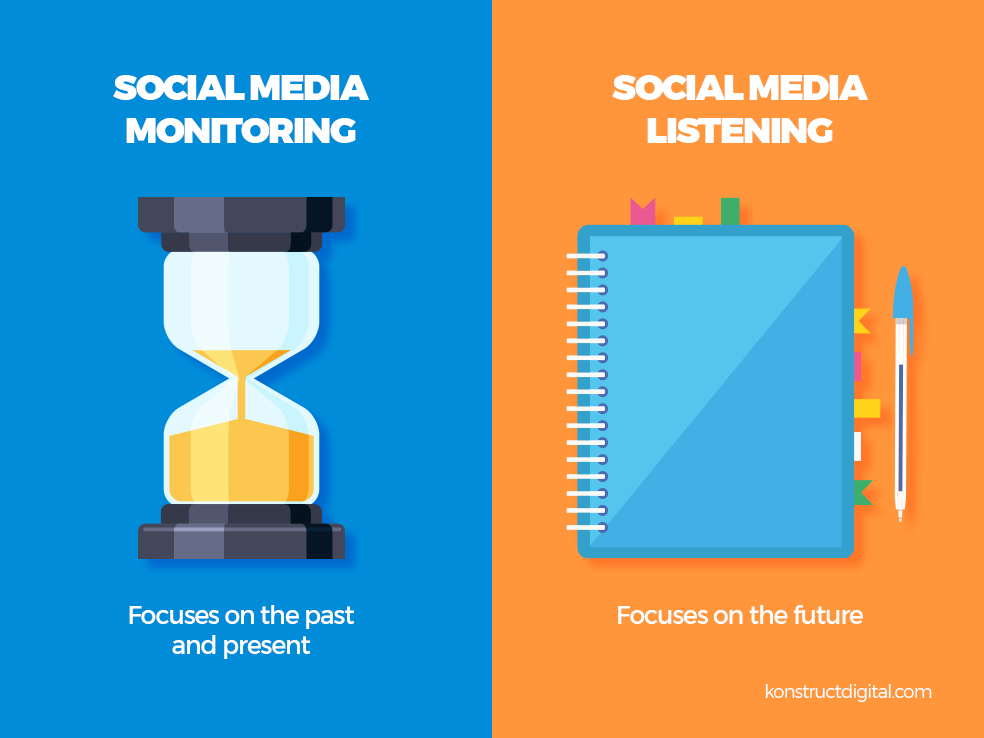
Is There Anything Else to Know About Social Media Listening Before We Move on?
Let’s dive a bit deeper here! Social media listening is essential for providing insights into your industry and brand. Social listening can help you draw key insights into your brand’s health and perception, and it can also help in other fields such as lead generation and link building as well.
It would be useless to try and effectively use social media monitoring without social listening (like making a sandwich without the bread). To be effective, they need each other.
Some of our favourite social media listening tips are:
- Cast a wide net: Social listening is not about you (sorry, but it’s true). So cast a wide net that goes beyond your usual social mentions and network. Be a fly on the wall for conversations that are relevant to you but not necessarily ABOUT you.
- Keep your competition close: don’t turn a blind eye to your competitors. Social media listening is a great way to watch what’s happening with them too. This can give you key insights into what they are good at and what they’re bad at too. We all know the saying, keep your friends close and enemies closer.
What to Look for in a Social Media Tracker Tool
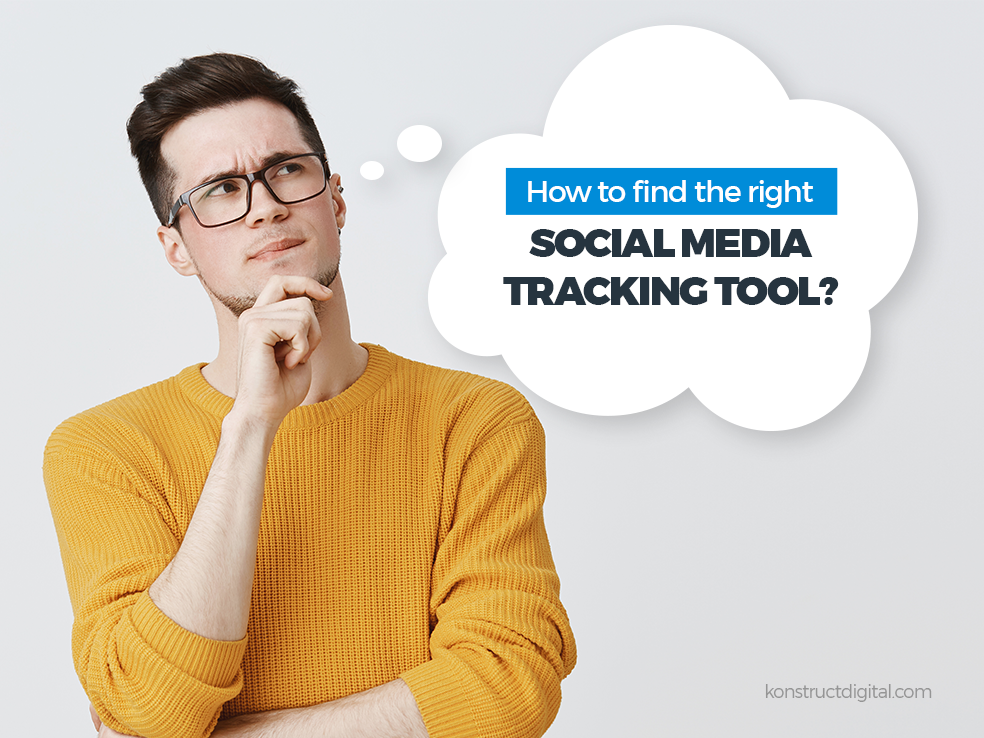
Not all social media analytics tools are made equal. Depending on how you want your social media tracker tool to work, it’s important to consider which metrics are more important to analyze.
Here’s a checklist of key metrics to include:
- Brand name, including common misspellings
- Brand product names
- All mentions, comments, reviews and direct messages
- Posts at your location(s)
- Reviews across various platforms
- Brand hashtags
- Posts that tag you in their photo
- Campaign hashtags
- Industry hashtags, if applicable
- All the above repeated for a competitor, depending on how close an eye you want to keep on them
Our Top 8 Social Media Monitoring Tools
Okay! Now that we’re up to speed on everything social media monitoring and listening, it’s time to decide which social media monitoring tool will work best for your needs!
1. Sprout Social
First up is Sprout. This social media analytics tool is one of the more comprehensive tools on the market. With Sprout, you can do social listening and analytics, customer care, and employee advocacy. In addition, you can track multiple platforms in real time without navigating in and out of the app. Everything is then unified in the Smart Inbox.
Sprout’s inboxes are definitely one of its redeeming features. Sprout separates two inboxes so you can easily and clearly navigate between monitoring or engaging. All the networks, search results, brand keywords, and even your hashtag campaigns will appear in real time in your inbox.
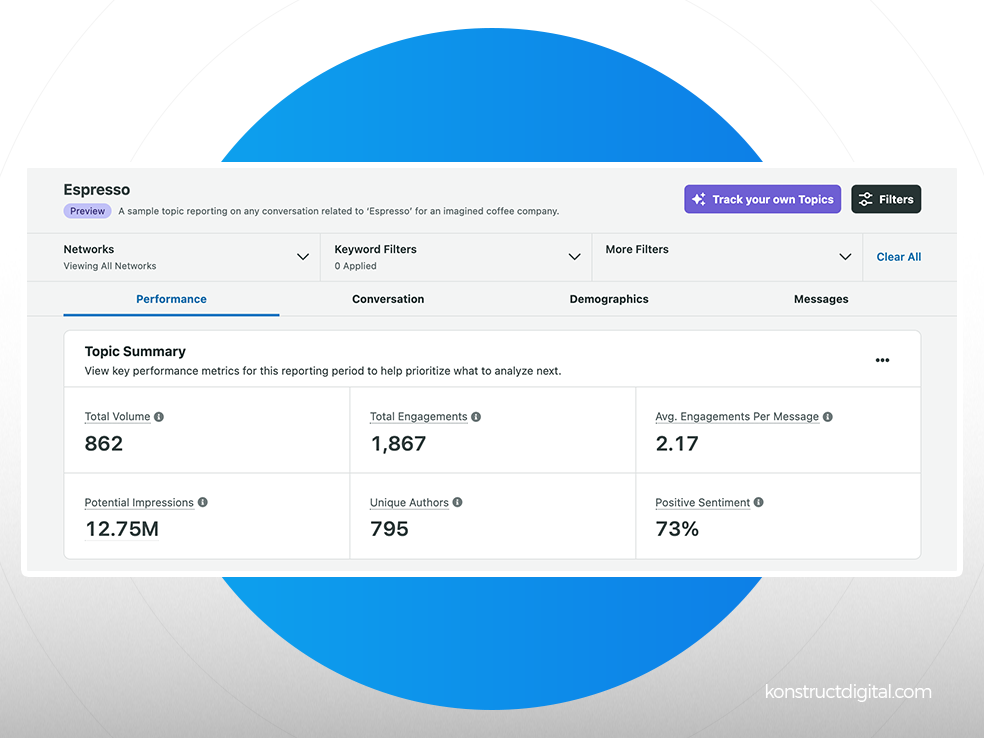
Praise-worthy Features:
- Custom Tag Feature
- Unified Smart Inbox
- Publishing Tool (For mapping out strategies and scheduling posts)
- Integrated Social Listening Tool (capable of uncovering trends in social conversations, learning more about your audience and providing insights)
- Compatible with HubSpot Software
Supported Social Platforms: Twitter, Facebook, Instagram, LinkedIn and Google+
Price Tag: Offers a 30-day free trial, Standard: $249/per month, Professional: $399
2. Hootsuite
A close runner-up is another major player, Hootsuite. Much like Sprout, Hootsuite is another all-in-one monitoring platform that allows you to monitor conversations relevant to you, your industry, and your products. Hootsuite can even watch what people say based on hashtags, keywords, locations and specific users like influencers.
Since Hootsuite’s monitoring tool is part of its social media package, if you decide to subscribe, you can also access its other features such as scheduling and analytics!
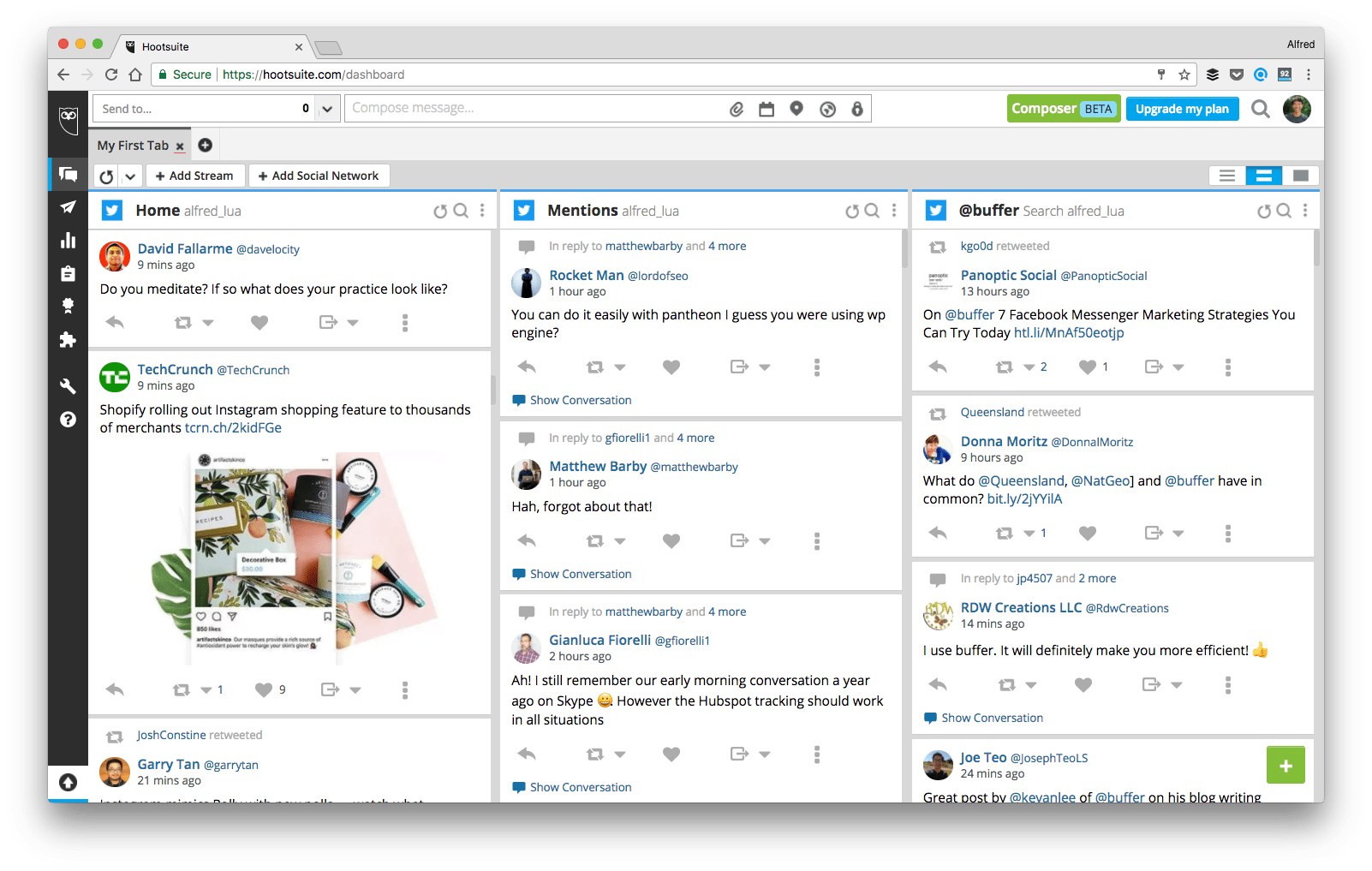
Praise-worthy Features:
- The dashboard lets you view and respond to all comments, messages, and brand mentions in a concise, unified view
- Monitor and manage all social media activity with native tools and features
- Customizable paid campaigns with Boost feature (which balances organic reach and paid ads to optimize reach and engagement)
- Can add multiple team members and assign tasks to the appropriate member
- Able to identify thought leaders and understand your perception in the marketplace
- Able to integrate and is compatible with top social listening tools such as Brandwatch and Talkwalker and other apps like HubSpot, Google My Business, Adviews and more!
Supported Social Platforms: Facebook, Twitter, Instagram, Google+, LinkedIn, blogs, forums, and more
Price Tag: Offers a 30-day free trial, Professional: $99/per month, Team: $249/per month
3. Brandwatch Consumer Research
Don’t let the name fool you. This tool offered by Brandwatch is a powerful monitoring tool. Brandwatch didn’t trim the fat off anything; this tool gives you access to 100 million online sources and over 1.4 trillion posts (and that is no exaggeration).
Brandwatch helps you find relevant data from blogs, forums, social media, news and even review sites too. Essentially, they tell you how and what your customers think of your brand and where they talk about it online.
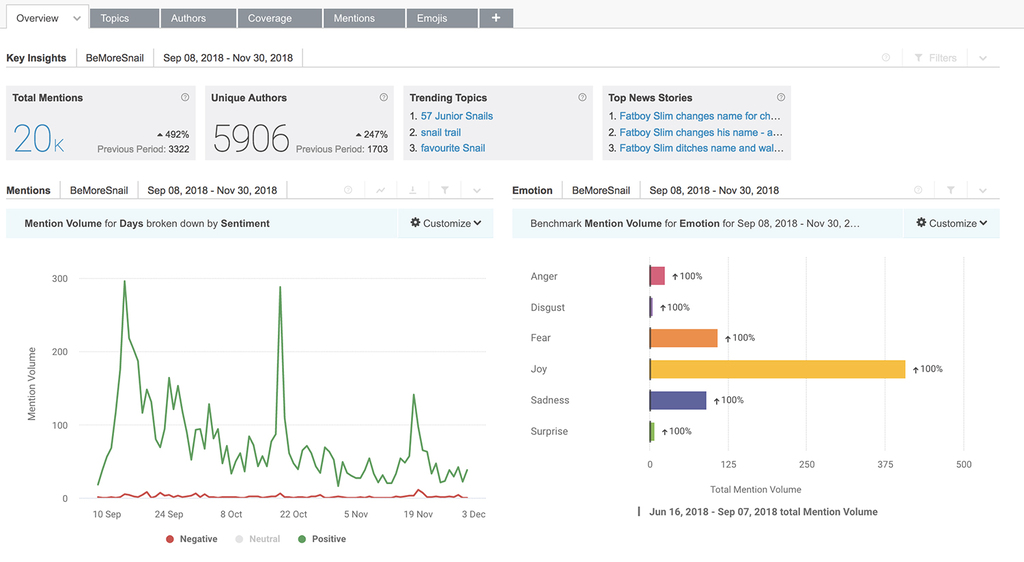
Praise-worthy Features:
- Provides an overview of your brand mentions’ volume and compares it with competitors
- Capable of monitoring brand sentiment in real time
- Able to generate who your audience demographic is and what topic they are interested in
- A data visualization tool that brings your analytics to life (visual life, of course)
- Access to the world’s largest archive of consumer opinions (which include things like proprietary data crawlers
Supported Social Platforms: Facebook, Twitter, Instagram, Reddit, blog posts, forums, and more
Price Tag: You need to contact and speak to an expert for pricing (dependent on brand mentions and historical data access)
4. Hubspot
HubSpot is kind of like a one-stop marketing shop. You can do everything from social media to marketing to emails (yes, email marketing is still a thing). HubSpot allows you to easily monitor your interactions, conversations, and even the audience on various social media platforms.
One of our favourite features of HubSpot’s monitoring tool is the capability to target specific audiences using context from the contacts database (which is also tied to a free CRM feature!). So it has all the necessary tools to manage daily interactions and engagement.

Praise-worthy Features:
- Prioritize social engagement
- Can monitor what’s current and trending by monitoring specific keywords
- It can be integrated with your Contacts Database and CRM software
- Capable of scheduling and cross-platform scheduling of social posts
- Manage social profiles on Facebook, Instagram, Twitter, and LinkedIn accounts from one tool
Platforms Supported: Facebook, Twitter, Linkedin, YouTube, Google+, blogging platforms with RSS feeds, and Pinterest
Price Tag: Professional: $1034/per month, Enterprise: $4700/month
5. Mention
At our halfway point, we have Mention! This social media tracker tool truly lives up to its name. Mention will literally find your brand anywhere you may be mentioned, which includes realms like Yelp, Booking.com, and even Amazon. Mention can be translated into 42 languages and track your brand globally.
But Mentions’ brag worthiness doesn’t stop there. Mention has filtering tools to help you sort through the noise and find online conversations worth monitoring. Within Mention, there is a competitive analysis tool that allows you to compare your brand against your competition. This is a pretty nifty way to ensure your content is always timely and gives you an edge against competitors.
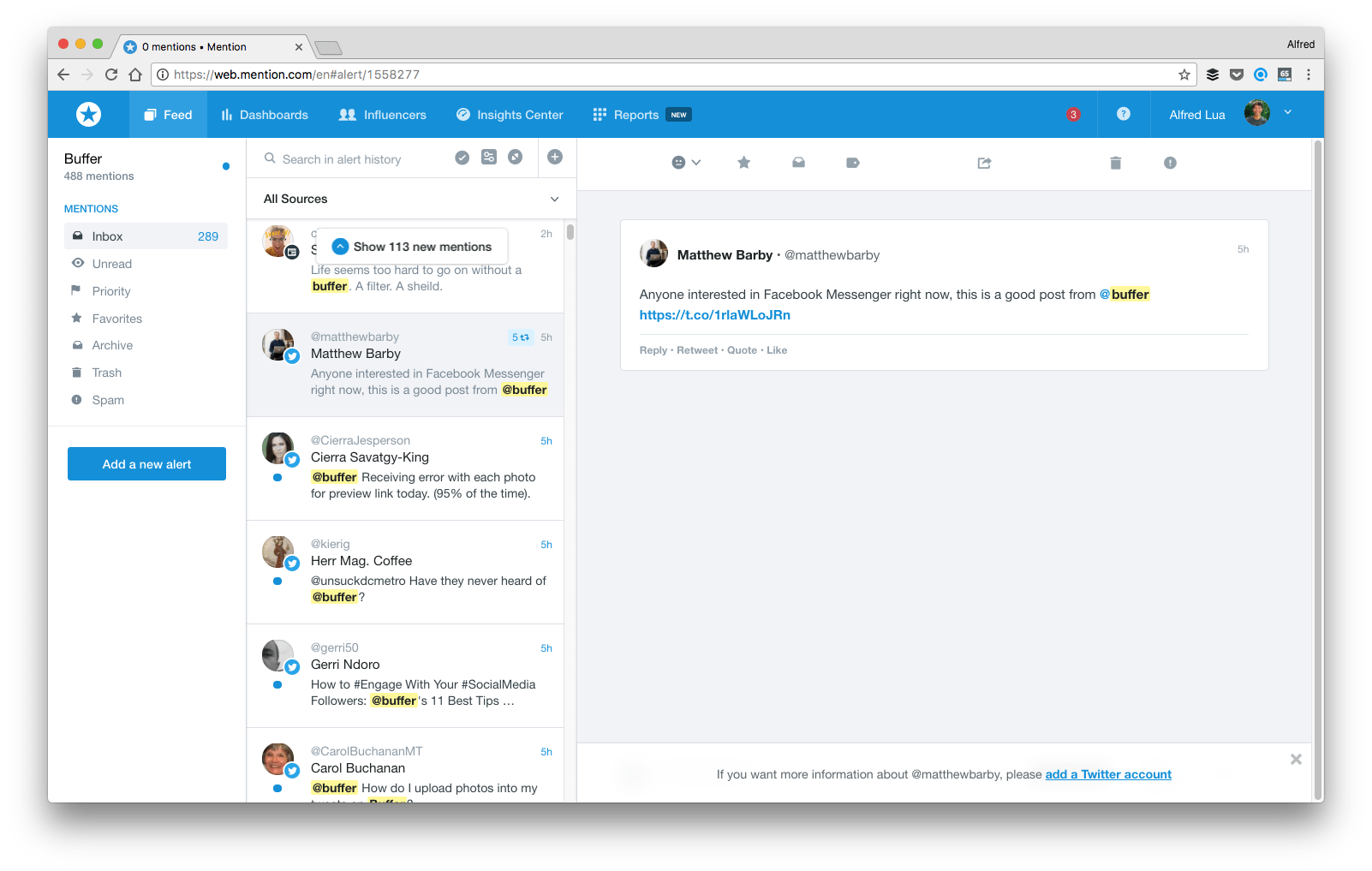
Praise-worthy Features:
- The team feature allows employees to collaborate on social media management efforts and can alert each other
- Tracking feature which allows for progress updates when in crisis communication
- Has a built-in Crisis Management feature to manage social uproar or crisis communications effectively.
- Compatible with your brand’s social media platforms such as Instagram, Facebook, Twitter and Buffer (which will allow you to direct reply and schedule through Mention)
Platforms Supported: Facebook, Twitter, Instagram, blogs, forums, and more
Price Tag: No Free trial, Solo: $41/per month, Pro: $83/per month, ProPlus: $149/per month
6. Buffer
Next up is Buffer. Buffer creates an omnichannel experience for you and your team. This comprehensive social media tracker tool makes it easy to find the conversations that matter the most and join in immediately (give them the old razzle-dazzle, if you will). Buffer has one centralized dashboard and a team-shared inbox, allowing you to post content and engage directly from one place.
Another benefit of Buffer is that it allows you to manage other elements like Facebook fan pages and groups, LinkedIn profiles and more. If you utilize the scheduling and posting feature, you can then use the analytical tools to measure what is working and what needs work.

Praise-worthy Features:
- Capable of planning effective social campaigns with scheduling and publishing features
- Analytic and report tools can monitor team performance through engagement and audience behaviour.
- The Story Monitoring feature lets you record and analyze your stories on Facebook and Instagram.
- Capable of integrating social platforms like Twitter, Facebook, Instagram, Linkedin and Pinterest
Platforms Supported: Facebook, Twitter, Instagram and Pinterest
Price Tag: Free plan available, Essentials: $6/per month, Team: $12/per month, Agency: $120/month
7. Agora Pulse
Agora Pulse is kind of like the Swiss army knife of the social media monitoring world. This tool can publish, engage, listen, report, and collaborate on your digital marketing projects.
Agora Pulse can track customer sentiments since this feature helps you identify the best social media content and identify ways to grow your online presence. Another benefit of Agora Pulse is that it lets you immediately join conversations from the platform.
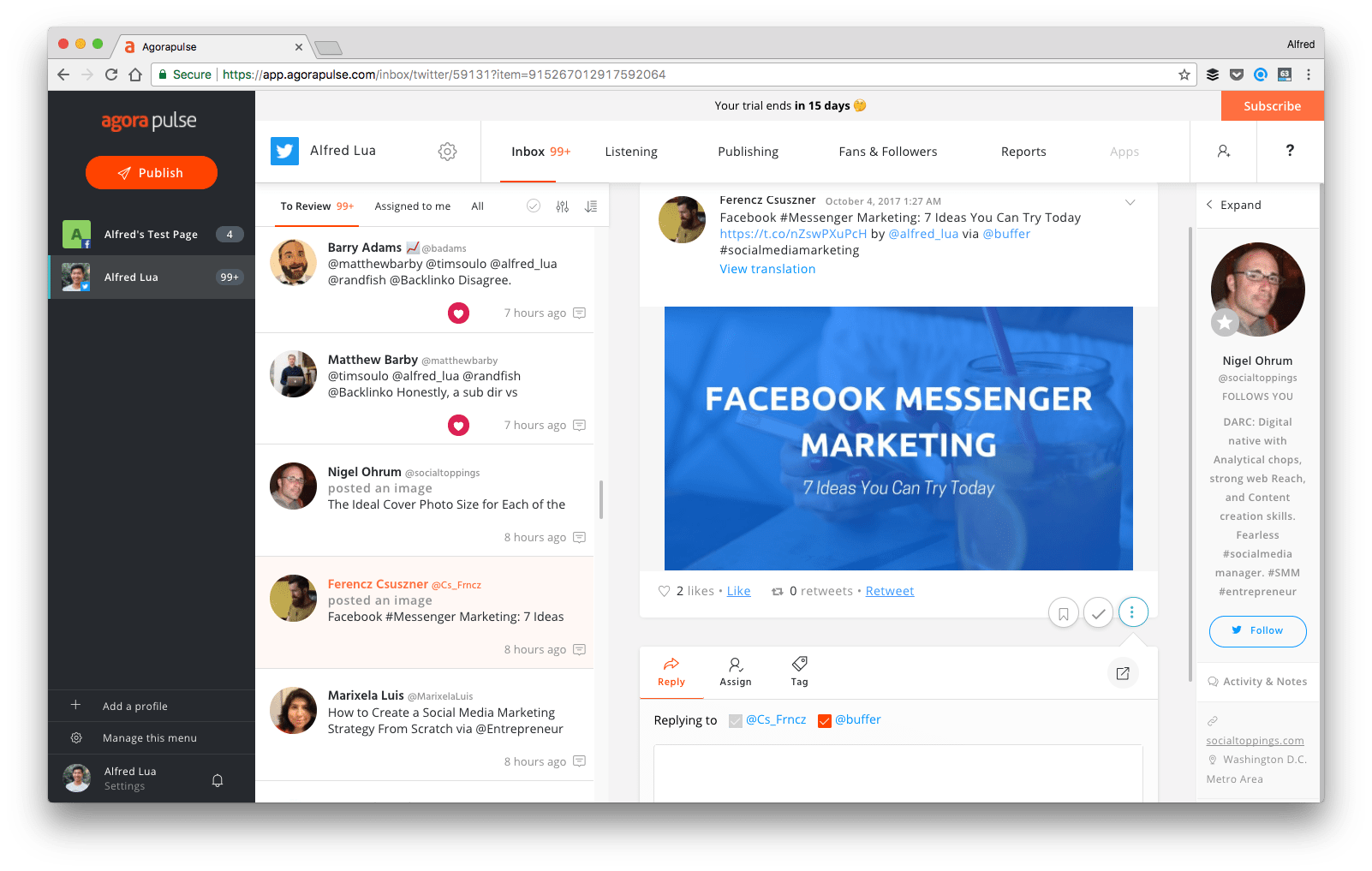
Praise-worthy Features:
- A label creation feature which helps you organize your content strategy by labelling items, such as important posts, competitor activity, and customer feedback
- Unlimited saved searches to help keep you on top of customer, prospect, and potential new business opportunities
- Unlimited hashtag and keyword tracking on Twitter and YouTube. It’s also possible to track hashtags on Instagram.
Platforms Supported: Instagram, Facebook, YouTube, and Twitter
Price Tag: Standard: $49/month, Professional: $79/month, Advanced: $119/month
8. Keyhole
Keyhole is a social media monitoring tool that really lets you get into the nitty-gritty of gathering data. Unlike traditional trackers that let you find individual mentions, Keyhole goes off the beaten track and finds trends, insights, and analyses of your preferred keywords, hashtags, or accounts.
Another impressive feature of Keyhole is that it lets you see data in real-time and visualizes it as heat maps to see your global impact. But, on top of all of that, Keyhole also lets you see all your competitors at the same time. By getting key benchmarking metrics and competitive intelligence, Keyhole can help you beat the competition.
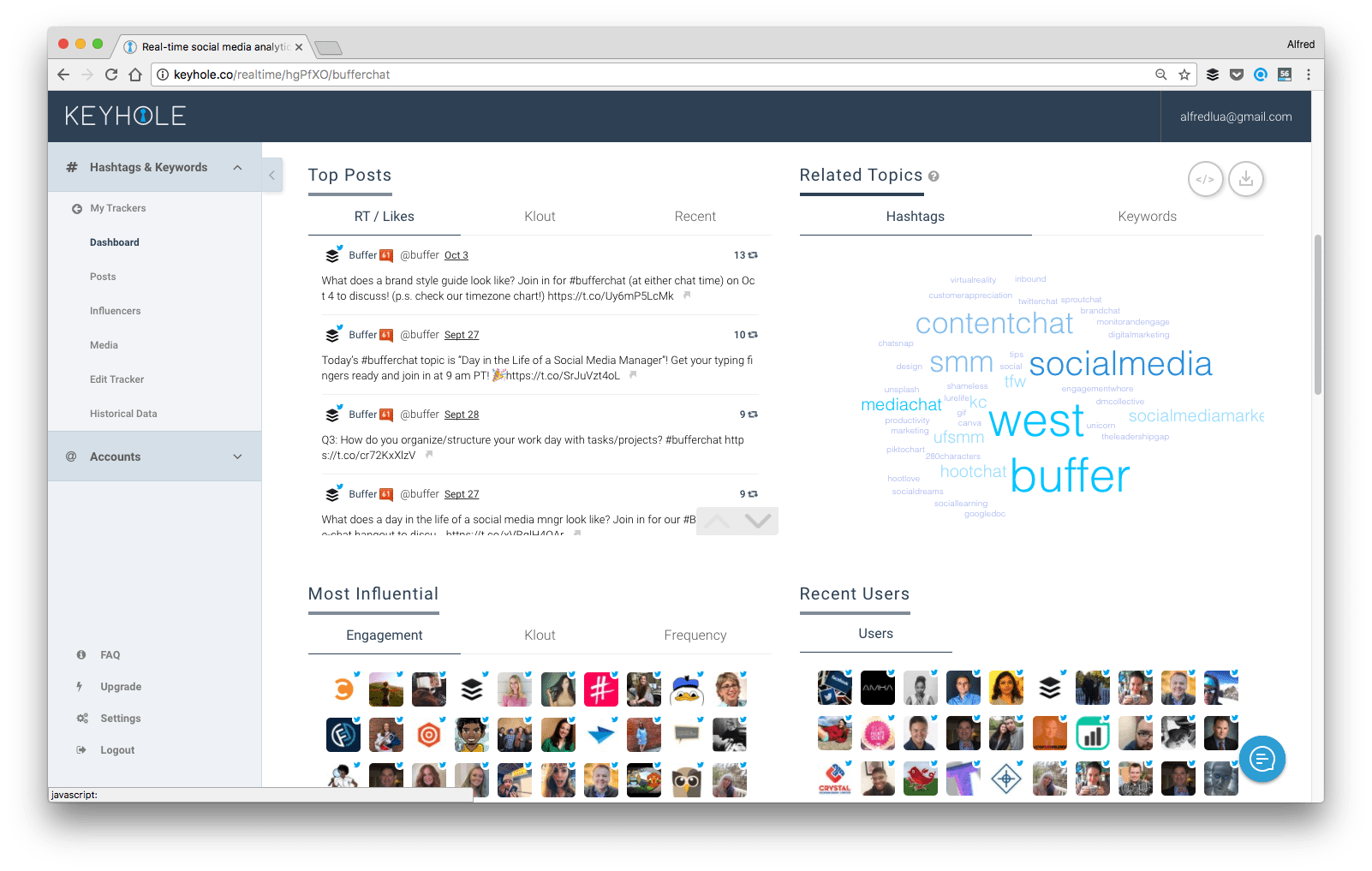
Praise-worthy Features:
- A hashtag analytics feature provides unique insights into your company’s tracked hashtags
- Capable of tracking engagement or reach of social media posts, and social media reporting
- An AI feature that enables you to predict how well your hashtag will perform
Platforms Supported: Facebook, Twitter, Instagram, Youtube and Tik Tok
Price Tag: SMB & Freelancers: $79/month, Corporate: $239, Agency: $479
How Do I Find the Right One for Me?
Well, first you have to make absolutely sure that the person treats you right… Oh wait, you’re talking about the tools. When it comes to choosing the right social media monitoring platform, you need to ensure that it fits your needs.
Keep in mind that although all these tools ‘sound similar,’ they will all greatly differ when it comes to functionality and coverage.
Being in the driver’s seat isn’t always easy. Picking the right social media monitoring tool can take quite a bit of navigating. Considering coverage, supported platforms, APIs, and of course budget, can make it difficult to reach your end decision.
We recommend the following:
- Make a “Wish List” of all the feature you want AND need your tool to have
- From there, compile a list of ideal bachelors and bachelorettes
- Take a peek into their past reviews and factoring in the price tag as well
- Create your shortlist and then reach out for demos
- Make sure that you AND your team love the tool
Another tip we truly recommend is having absolutely no shame in your game. Try out as many tools as you need. Finding the right tool can seriously elevate your business and marketing decisions for the better.
Okay, Got it. Any Social Media Monitoring Tool Tips?
Since you have been around for so long, we have 3 key tips to help you monitor social media the best you can.
Tip 1: Go to Infinity and Beyond [Your Brand]
We’ve already covered that it’s absolutely crucial to track conversations about your brand and products and keep an eye on the competition when it comes to social media monitoring. But apply a little Toy Story logic and go to infinity and beyond; going beyond your brand can help shape your view on the overall industry and can help reinform your social media marketing strategy as well.
Tip 2: Sharing is Not Caring
One metric to definitely keep an eye on is your social share of voice. This particular metric measures when there are changes in your standing compared to your competitors. If your share goes down, well, that means someone else’s has gone up.
Keeping your eye on this can alert you to dig deeper and find out what has changed, and strategize to regain the ground you lost. Most social shares of voice occur in real-time, so your team can jump right on what’s happening and why if there is a change.
Tip 3: Use a Killer Combo Attack with Keywords
Don’t limit your monitoring to simple high-volume keywords or keyphrases. If you amp up your combo skills, you can use a combination of keywords to identify intent in social signals. Even adding question-based keywords can help you see what people are actively searching for.
When you add a word like “recommend” to a keyword related to your products or industry, you start to see what people are actively searching for regarding information. It also gives you a peek into how other competitors are responding as well.
Some of our favourite killer combos to add to your keyword searches are:
- Suggest
- Recommend
- Improve
- Best
- Favourite
- Suggestion
- How
- What
Wondering How to Track Down Success for Your Business?
Phew, we know this was a LONG one, but now you have all the know-how on how to find the perfect social media monitoring tracker for your business! There are plenty of factors that need to be considered, and having a solid foundation of social media monitoring and social listening will help you filter and sort through all the tools out there.
There’s a saying that many hands make light work, and we definitely believe that to be true. Having a solid social media strategy that encompasses all the facets can be hard to do… alone. But that’s why Konstruct is here. We love our industry and really know the minuscule details of it too. We know what we’re talking about when it comes to tracking down success for our clients. If you need help getting your
Need help with B2B Content?
Learn more about Konstruct's B2B Content Services
More B2B Content Resources
- Should You Replace Your Content Marketer with AI? Maybe…
- LinkedIn B2B Marketing Examples That Made Us Say, “$h!t, I wish I thought of that!”
- 9 B2B Social Media Dos and Don’ts That’ll Change Your Social Game
- Stop Snoozing on These 7 B2B Content Marketing Trends
- B2B Marketing Copywriting: 10 Tips for Writing Persuasive Copy for Today’s B2B Buyers
- 9 Wow-Worthy B2B Content Marketing Examples To Inspire Your Content Strategy
- 8 Irrefutable B2B Social Media Marketing Benefits
- The Proven Formula for a Rock-Solid LinkedIn Content Strategy
- Content Marketing Statistics: The Facts You Can’t Afford to Ignore
- 999,999 Tips for Creating On-Brand SEO Content
